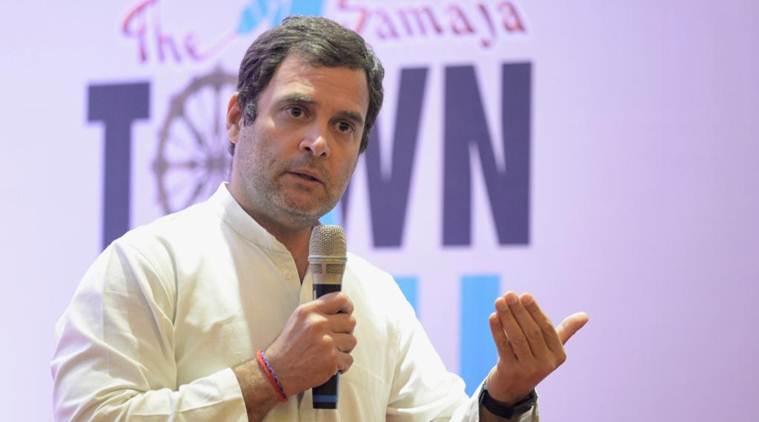Fifth column: Confusion better than certainties
The man who the Congress party hopes will replace Narendra Modi has started articulating his economic and political ideas with startling clarity.

There was a time when Rahul Gandhi’s political and economic ideas were so mysterious that they confused our finest pundits. When he spoke of the “velocity of Jupiter” to solve the Dalit question, most political pundits were bemused. When he said India was a beehive and not a country, it left us even more mystified. And, he handed Narendra Modi his trump card in the 2014 general election. Beehive is a word that translates badly into Hindi and Modi had much fun mocking him for calling “our beloved Mother India” a beehive. Recently, things have changed.
The man who the Congress party hopes will replace Narendra Modi has started articulating his economic and political ideas with startling clarity. Politically, he sees India as divided between “the rich and the poor” and charges Modi with being interested only in pleasing “15” rich Indians. It has never been clear which 15 Indians he is talking about, but this is a charge he has been making for the past four years, most memorably when he made that sneery comment about Modi’s government being a “suit-boot ki sarkar”. A government of the suited and booted.
What is now very clear is that the Congress president sees himself as a man who is against rich Indians and on the side of those who are poor. Even so, his announcement before last week’s Budget, that if the Congress won in 2019, it would ensure that India implemented an economic policy that guaranteed every poor Indian a basic minimum income, was over the top. His India, he declared grandly, would become a country in which “not one person would be hungry and not one person would be poor”.
As I watched him make this speech, against an opulent backdrop of marigold and jasmine streamers, memories of his grandmother’s “Garibi Hatao” election came back. It was Indira Gandhi’s defining election. She became in the popular mind the prime minister who would eradicate poverty. Other memories came back. Of elections, much after that one in 1971, in which she would assure the barefoot, hungry, desperate people who flocked to her rallies that she was their saviour. Standing among them, I would gaze with their eyes at the chopper that brought her and see that they saw her as not just their champion but as a goddess.
She never managed to “eradicate poverty” but she succeeded very well in setting up a vast infrastructure to redistribute it. There was nothing else she could have done because she despised private enterprise so much that she created a licence raj that entrusted the job of creating wealth to officials, while fining entrepreneurs who dared produce more than their quotas. With the exception of China, there is no country where officials have succeeded in creating wealth. So it was only after a prime minister who did not belong to our imperial dynasty took charge, that India stopped being a country of starving millions.
As soon as Mrs Gandhi’s daughter-in-law became India’s de facto prime minister, she returned to economic policies that served once more to redistribute poverty. Modi did not reverse these ‘poverty alleviation’ schemes, so the price Indian taxpayers pay for food security and job guarantee schemes is already beyond calculation. Add on to this astronomical bill the cost of a programme to guarantee income to the poorest Indians, and there will not be any money left to build the infrastructure that could actually make India rich. Taxpayers’ money will be spent entirely on the infrastructure to redistribute poverty.






































No hay comentarios:
Publicar un comentario